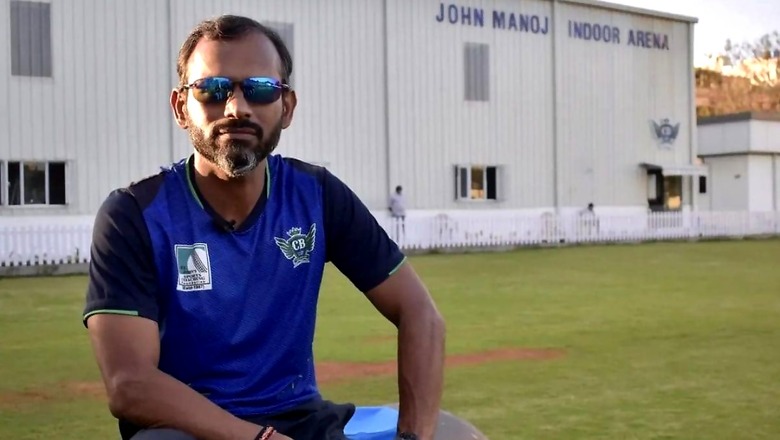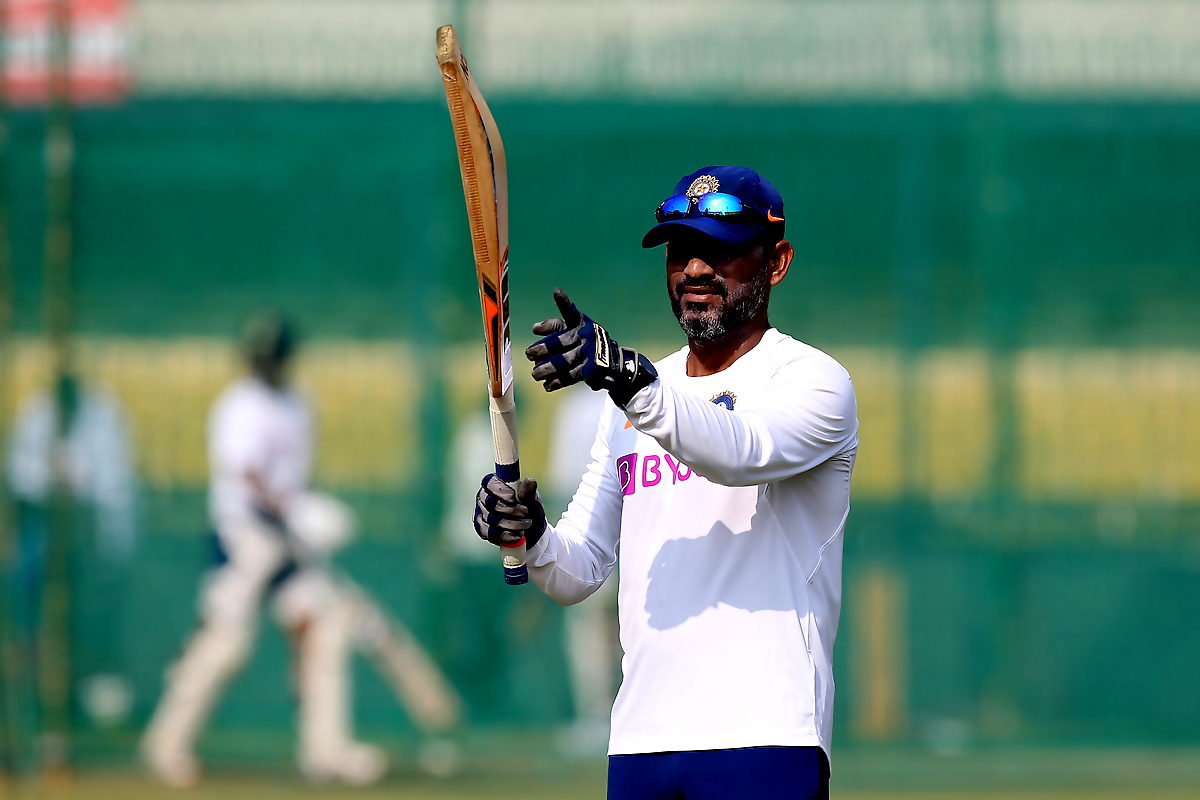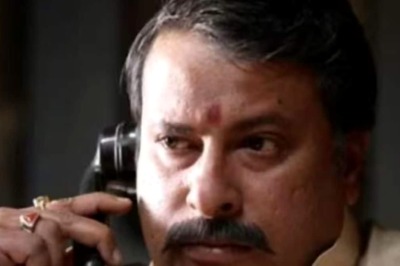
views
Sridhar Ramakrishnan, a former Hyderabad cricketer who served as Team India’s fielding coach from 2014 to 2021, is currently enjoying life out of the spotlight as the head of the Coaching Beyond academy at the St. John Paul’s Coaching Foundation. Sridhar may not want to take much credit, calling himself lucky instead, for the Indian team’s amazing transformation as a gun fielding unit, but his role in that change cannot be denied.
Sridhar sat down with Cricketnext.com at his academy in Hyderabad to talk about his time spent training the likes of MS Dhoni, Virat Kohli, and Rohit Sharma, and how he alongside, the likes of Ravi Shastri, MS Dhoni, Virat Kohli and Rohit Sharma ushered in a change in nature of the Indian cricket team’s approach to fitness and fielding. In addition, he gives a comprehensive overview of his coaching venture at St. John’s Academy and Coaching Foundation, discussing its guiding principles, goals, and impact.
Excerpts:
Your memories and experiences from your tenure as the fielding coach for the Indian cricket team from 2014 to 2021?
Look, I was very fortunate, to be very honest. I was mighty, mighty fortunate and God has been very kind to me. When Ravi called me for that Indian team tenure, I had a captain like MS Dohani to fall back upon. He was so cool, he was so welcoming, such a fabulous human being. I know you could never have enough of him. The way he made me feel welcome when I went to him for the first time is very close to me. Also, we had a very young team. The team had a lot of seniors who had retired after playing the World Cup and winning the World Cup in 2011. It’s about two years from the World Cup. We had a very young team, a very athletic team, and we are a gun fielding team, to be very honest.
You had the Rainas, you had the Umeshes at his best. You had Virat, Jadeja, and Rohit. You had such a good fielding team, a young athletic team. The fitness culture had well and truly kicked in. It was very easy for me to just fine-tune there. It’s a lot of fit cricketers and enthusiastic young men.
Then Virat took over captaincy and made it even more mandatory. Fielding became such a prominent part of the Indian cricket team. Again, big thanks to Virat for being in that culture. I think that’s going to become a tradition, what Virat did completely. Take the mantle from and pass it on and create an Indian team that’s… What can I say? A giant, creating such a fabulous cricket team.
Again, working with Virat or during his tenure, the vision of Virat was very clear, being an aggressive fielding unit. Ravi seconded that and it was easy for me to work and we had a lot of emphasis on fitness. So, handling the field has become a lot easier and a lot more fun for me. I was very fortunate to have people like MS, Virat being at the helm of affairs during my tenure; and subsequently Rohit as well. He captained in four tournaments. He captained when I was there and won most of them. Then Ajinkya in the famous Australian [2021]series. So fortunate to have very good captains, very understanding captains with a vision of when I worked.
Then obviously great head coaches to work with. Ravi Bhai is someone who I look up to as one of my mentors. So working under his vision was a great learning for me.

How did you go about improving the fielding aspect of the team, particularly during the period from 2014 to 2017?
I think the philosophy was being honest and fearless. Fearless in giving you 100 % on every ball you field and being honest in saying, Oh, well, I didn’t give me 100 % on this ball. Let me go back and give my 100 % next ball. Simple. That was the philosophy with which we operated, being fearless, but being extremely honest for the sake of the team. And getting the skills, the technical part right, getting the right fielders in the right position, getting them to put their body on the line. These are the easy things to do because the trust factor between the coach and the player was there and they also knew what the captain wanted from them. That was the easy part to do, but I think the philosophy was being brutally honest for the sake of the team.
Did the approach to fitness and fielding change when there was a transition in captaincy from MS Dhoni to Virat Kohli?
Interestingly, you ask this because not many know MS emphasises fitness as much as Virat I’ve heard him many times say how important fitness and fielding is in change rooms and he made no mistake. He made no bones about it. When he was unhappy with the fielder, you know it. You know MS, you know when he’s not happy. He was… I mean, he was not at all laid back or easy on the players in terms of fielding and fitness. He was, I wouldn’t use the word strict or harsh, but he was as demanding in terms of fitness and fielding as any other captain would.
With Virat, you could see it. That is the only difference. But after that as well, the standards have gone up. I always say I’ve written it in my book as well, fitness is now part of the skills. Earlier, they were only in the late, 60s, still the 60s and 70s, there are only two skills in cricket: batting and bowling. The third skill, fielding, really came into prominence with the advent of television, with the advent of cricket much as being televised.
View this post on Instagram
How has the importance of fielding evolved in cricket, particularly with the rise of fitness culture?
Let’s give credit to Kerry Packer. Then suddenly you’re looking at, Oh, the ball is near me and the camera is on me. I need to not look very clumsy and pick the ball nicely. That’s when people realised, okay, fielding is also important. By the time the 90s came, by the time the World Cups came, fielding had become such an important part. I think in the 90s, there was another skill which came to cricket called fitness. Until then, fitness was not so important. But in the 90s, the South African team came back from their Apartheid Ban and then they brought a different level of athleticism. And then you saw the Australians take it to the next level. Although we were a little late to the party, but well, now we are well and truly leaders. And in 2008, it was the next big revolution. And you know what was that? The IPL changed the nature of the game.
How did you address the challenge of improving fielding skills, especially for players who were not naturally athletic?
The best they can be. The challenge was to get each fielder to be the best they could be. You don’t want a Shami to be a Jonty Rhodes, but you want Shami to be the best Shami can be. That was a challenge. It is simple to get them aligned with the culture and the philosophy of the team. Sometimes it’s just a conversation over a coffee. Sometimes it could be a hard session out on the field. But the idea was to change the mindset of the athlete as to how the team looks at that athlete as a fielder what he needs to give back to the team as a fielder, and how does he fit into the culture of the team?
The culture was already set. It was already there. So all we needed to do was talk to them and get them to buy into that culture and become a fit into that team. With many of these youngsters also, now they are a fit, now they are culturally fit into the team. That came with stability as well, stability in the support staff group, and stability in the leadership group that came with that as well.
It was a lot of hard work on the field. Make no mistake, there were a lot of hours and hours and hours of practice, but it is also the change in mindset and the trust the players had in the team management and the leadership group.
View this post on Instagram
Your thoughts on the historic Gabba Test in 2021 and the series as a whole, considering the challenges the Indian team faced with injuries and new players?
Yeah, I mean, look, that series is to me, God was sitting in a dressing room at times. But that to me, is unbelievable. I remember every moment of the series vividly. At the same time, everything seems to be such a haze … it’s a blur. It’s like you’re being in a zone. You don’t remember when you’re in the zone. You don’t remember. But you also remember many things around it. That was a tough series because we lost a lot of players due to various reasons. But it was a great chance for others to put their hand up and show what they can bring to Indian cricket. That last day, the Gabat Test … I mean, you could live that day forever. Shubman Gill setting it up before lunch. Pujara fighting it out in the middle phase. And the great, Rishabh Pant. Too young to be called great, but what Rishabh did that afternoon was massive for Indian cricket. We were finishing it off. We had three guys doing it and the rest of them supported them with the young team. Siraj, leading from the front, the bowling attack, just being two Test matches old, became the leader of the pack.
Our entire Test attack was not more than four Tests old. That was the way it was. It was unbelievable. It was something which… someone rightly said India – we have won two World Cups, but we’ve never won a series in Australia. It’s probably bigger than a World Cup then. Now we have won two back-to-back Series in Australia. That was as big as the World Cup.
You mentioned Rishabh Pant’s improvement in fielding and wicket-keeping. What were the challenges you faced while working with him, especially considering his fitness and skill development?
Again, like I always like to do, I think I would give a lot of credit to Pant himself for understanding what the team needed. When he first came he was still a young boy, flamboyant, not knowing the culture of the team, it took time for him to fit into the culture of the team, what the management wanted, and what was the vision of the captain and the coach. It took a bit of time for him to fit into that culture. But once he did, he fit and how. You can say that.
I also couldn’t connect with him, to be very honest, initially because there was a way he learned and I couldn’t find that way. I was teaching the way I taught, but unfortunately, I was not cutting the ice, you can say. But credit to him, credit to Rishabh Pant, and I thank him for that out in public for bearing and waiting for the time when suddenly we both found each other’s connection. It took about a good 12 to 18 months, but once we found that understanding and then as they said, we saw some good magic happen with his wicked keeping.
And I’m very fortunate. I’m very thankful to Rishabh Pant for being a little changing his ways and coming to a midway where we both could finally start trusting each other. But he was such a great guy to coach. He’s a wonderful kid. His thought process is different. That is how it should be, isn’t it? It should be different. Young, new generation of Indian kids. They’re fabulous. I learned a lot from that kid. I learned a lot and it’s helping me in my coaching at the grassroots level now. But he’s a wonderful kid.

What are your thoughts on India’s chances in the upcoming World Cup?
You rightly said that it is India’s World Cup to lose and India has been extremely well prepared. I think well primed is the right word I would use for the Indian team ahead of the World Cup. A lot of credit has to go to the BCCI and the Indian cricket team management, Rahul Dravid and his team of coaches and support staff, along with Captain Rohit Sharma, NCA, and the rest of the support staff who just managed the team in such a way over the last couple of years, so they have the best talent available in prime form for the World Cup. I’m so proud that it happened perfectly and it happened for the World Cup, which was played in India. So all the more reason for the Indian team to be at their best. That is the reason why India is the overwhelming favourite.
What’s the significance of the Home World Cup for some of the experienced players?
It means a lot, I’m sure, despite many of them having played more than three World Cups. I think the Home World Cup means a lot. Ash [R Aswhin] and Virat [Kohli] have been part of our Home World Cup already, so they know what it is to be a part of our Home World Cup. But that team [of 2011] had a lot of experience as well in terms of having Sachin Tendulkar playing, they had Zaheer Khan playing. There was so much of a wealth of experience in the team and they knew how to embrace the pressure. The reason I’m saying embrace the pressure is because this team has to do that. They need to enjoy the pressure. Yes, it’s a Home World Cup, which means a lot of positives like knowing the conditions, knowing the crowd, and knowing everything about what is going to be thrown at you. So you’ve got to enjoy that. That’s the key. That’s the key. I’m sure all these boys are equipped to do that. Many of them are playing in the 2nd World Cup. A lot of them are playing their third and even fourth.
There’s a lot of travel for the Indian team. Probably is the only team which is playing all matches at different venues. That’s a little bit of an added a bit of disadvantage, I would say because every venue wants to have a pie of the share of the Indian team playing. Unfortunately, Hyderabad missed out, like you said, being such a wonderful venue. But that is what it is about the Indian team in this World Cup. They’ve got to embrace the pressure and have fun.
Your World Cup finalists. Who do you think will make it to the final?
I believe it will be India and Australia in the final. The other semi-finalists will determine whom India faces in the semi-final. If it’s not Australia in the semi-final against India, then my prediction is still India vs. Australia.
Now, moving on to the player of the tournament. Who do you think will be the standout player, and why?
It’s a tough call. You need a good all-rounder. I would put a lot of money on players like Sam Curran, Ben Stokes, Hardik Pandya, Ravindra, and Jadeja, who do both skills to be a player in the tournaments. But if one of your openers gets going and scores 600 runs like what Rohit did in the last World Cup, then that can be phenomenal for any team. So you have a Gill in our team to do that. Player of the tournament is a tough call to make, but I would want Hardik Pandya to be the player of the tournament.
Can you provide an overview of your coaching venture at the St. John’s Academy and Coaching Foundation, including its philosophy and objectives?
Well, we thought about this way back in 2019 when our contracts got extended for another couple of years. We’re thinking that we should do something not just for cricketers at the grassroots level, but also for coaches at the grassroots level. When Ravi was the chairman, [Bharat] Arun, Dr. Kinjal [Suratwala], we were part of making the manual for BCCI. We made the coaching manual and it was a success. We tweaked the way NCA functioned way back then and that also was good. Then we moved on to the Indian cricket team and stuff. In 2019, we thought we must do more at the grassroots level because not everyone can go to the NCA.
Because the NCA is for selected elite players and even the same thing for coaches. There’s so much grassroots-level coaching going on in India, but every coach can get themselves the coach education. Coaching is a skill, just like playing is. Playing doesn’t qualify you to be a coach. Coaching has to be practised. It’s a skill. We thought let’s do something at the grassroots level and open a brick-and-mortar academy where we can coach a lot of young cricketers from around the country, not just at the grassroots level, but also for those high-performance kids who need it.
We called St. John’s Sport Coaching Foundation and they were happy to tie up with us and give us the place. We developed the place into a high-performance center and we roped in Dr. Kinjal as Coach Education Head. Our primary verticals are, coaching kids at the grassroots level and the semi-elite level, and another vertical, which is doing very well, is a Coach Education program. We do the foundation course for coaches who can come here for six days. It’s an on-site course because an on-site course has a lot of advantages. It’s an on-site course where they come and learn the basics foundation of coaching—and also they get an opportunity to come and do an internship or an observership under Master Coaches to hone their coaching skills, coaching skills like throwing the ball, hitting a ball, hitting a ball, throwing for catching the basics, giving throw downs, the skills which you need to be a hands-on. We are very proud of this and it’s been doing well. God has been kind. We have educated more than 350 coaches till today around the country. More than 253 kids come to this academy and we have another one in Chennai.
We have more than 100 kids practice. We chose Hyderabad and Chennai because I live in Hyderabad and Arun lives in Chennai. We committed to the promise we make of quality coaching because it makes a difference if me and Arun are there. After all, we have that experience of coaching for more than two and a half decades. Having made a lot of mistakes along the way, we’re still making mistakes, but having made a lot of mistakes along the way now, we make fewer mistakes than we used to a decade ago. That is something which we are giving to the thing. No, it’s not a charitable organization. We do collect fees. We do collect fees, but we give back more than what we collected in terms of what we give to the kids in terms of quality. We do offer scholarships, but only for those who deserve it, only for the underprivileged. But talent is a prerequisite. So yeah, it’s going on well. It’s going well. Now we are tied up with Hindustan Unilever to give scholarships to 25 girls. So 25 girls in Hyderabad and 25 girls in Chennai get full coaching, physiotherapy, training, strengthened conditioning and mentoring completely free, of course, and it’s taken care by Hindustan Unilever.

















Comments
0 comment